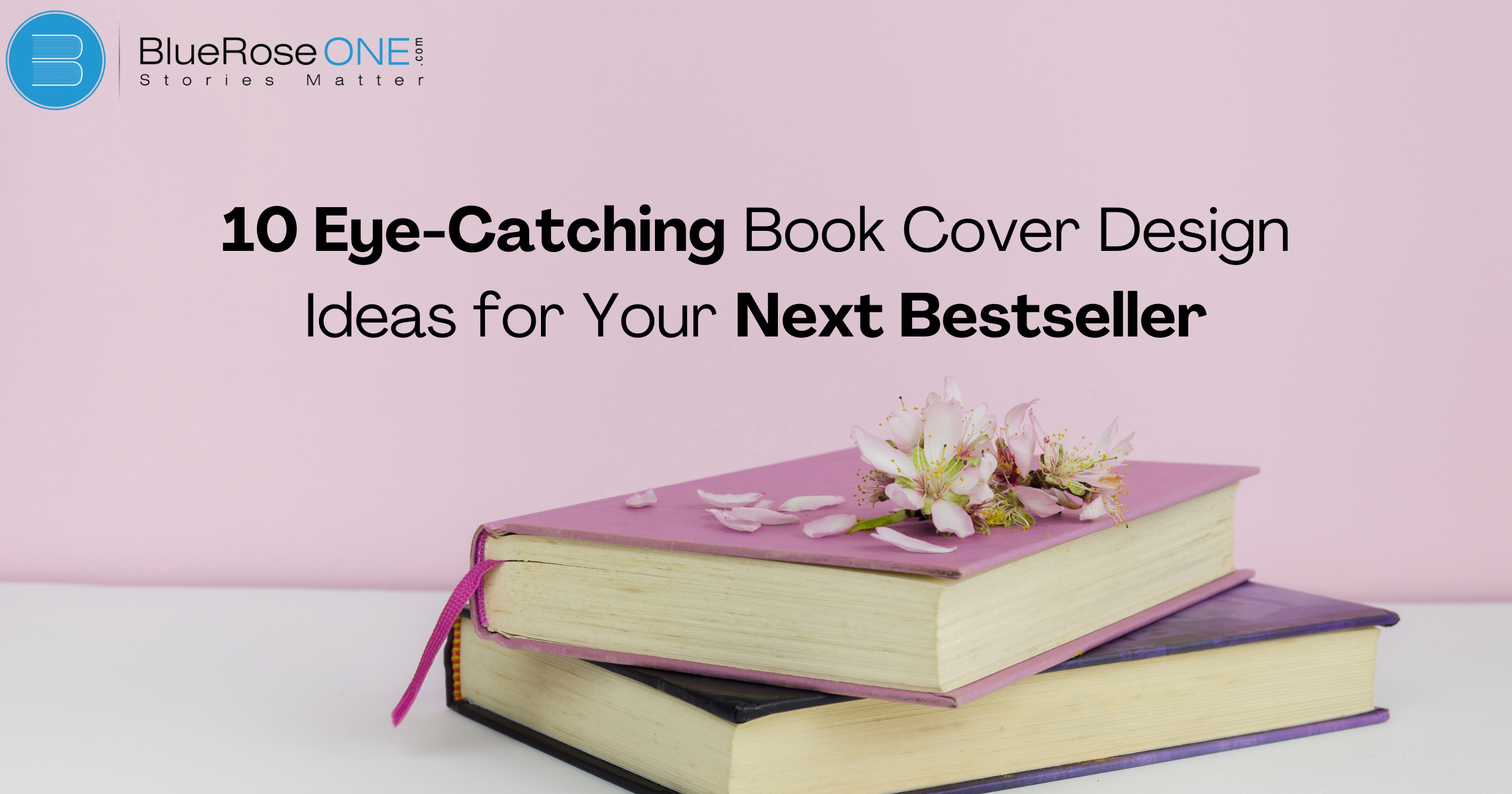The significance of an engaging book cover is immeasurable in a world when people frequently evaluate books based just on their covers. In addition to drawing attention, a visually appealing cover conveys the substance of the book to prospective readers. The likelihood that your book will succeed can be greatly increased by investing in an eye-catching book cover design, regardless of whether you are a self-published author or are working with a formal publishing house. This post will go over 10 striking book cover design ideas that will make your next book stand out in the stores.
You may also like: Top 10 Famous Adventure Books to Read for Book Lovers
1. Minimalistic Designs
When it comes to cover design ideas, Minimalist book cover designs are becoming more and more popular because of their subtle elegance and capacity to enthrall readers. In order to deliver a message that is both engaging and clear, minimalism eliminates extraneous details and concentrates on what matters most.
A minimalist book cover makes an eye-catching impression with the thoughtful use of negative space, straightforward text, and clean lines.
These designs stand out in a crowded market by embracing simplicity, luring readers in with their sophisticated appearance and allude to the depth within. To attain everlasting appeal and attraction, think about putting minimalistic themes into the cover of your next best-selling book.
2. Bold Typography
Bold typography may transform an average book cover design into something truly remarkable. Selecting the appropriate font may instantly captivate readers and convey the spirit of your tale.
Whether it’s a dramatic serif or a sleek sans-serif, eye-catching font conveys the genre and tone of your work and demands attention. You can make your title pop and stand out on the shelf or in online previews by experimenting with size, colour, and positioning.
Bold typography can make a powerful first impression on readers and encourage them to pick up your next best-seller. Use it in your book cover design.
3. Illustrative Covers
When it comes to ideas for book covers, illustrated covers have the greatest ability to draw in readers and quickly express the main plot of a novel.
Vibrant imagery, eye-catching colours, and detailed graphics are used in these covers to arouse curiosity and elicit strong feelings in the reader. Illustrative book covers have an abundance of opportunities to convey the core of a book’s story, ranging from playful doodles to detailed paintings.
Adding graphic elements to your cover design may turn your book—whether it’s a romantic suspense or a magical adventure—into a piece of beauty that compels readers to turn the first page.
You may also like: Challenges and Opportunities in Modern Book Distribution
4. Abstract Artwork
Your next bestseller will have a distinctive and thought-provoking look if you use abstract artwork for the cover. Potential readers may be drawn in by abstract art’s captivating compositions, vivid colours, and flowing forms, which can elicit a variety of feelings and interpretations.
By including abstract components in your book cover design, you can pique readers’ interest and encourage them to pick up your book and continue reading.
Abstract art provides countless options for producing striking book covers that stand out on the shelves and on digital platforms, whether it’s through strong brushstrokes, geometric patterns, or bizarre imagery.
5. Vintage-Inspired Designs
Want to add charm and nostalgia to the cover of your next best-seller? Readers are drawn in by the ageless appeal of vintage-inspired designs as soon as they set eyes on your book.
These designs, which take their cues from iconic motifs, complex patterns, and traditional typography, transport readers to bygone eras while yet appealing to modern eyes. Use fading colours, patterned borders, and whimsical graphics to create an air of old-world charm.
Whether it’s a striking Art Deco feature or a charming floral theme evoking Victorian elegance, vintage-inspired book cover designs lend sophistication and personality to your literary masterpiece. Take a look at these 10 striking book cover designs for inspiration for your next best-seller and dive into the fascinating realm of retro style.
You may also like: Exploring the Benefits of Joining a Book Club
6. Monochrome Covers
When it comes to book cover design inspiration, monochromatic covers radiate classic style and alluring minimalism. These covers, which only use one colour scheme, captivate readers with their modest yet striking design.
Monochromatic covers, whether they have a subtle grayscale scheme or a startling black-and-white contrast, draw attention both on book shelves and online.
Designers are able to create monochrome book covers that captivate readers with their inventive typography, captivating photography, or simple compositions. By embracing the colourless possibilities that come with being monochromatic, both writers and designers may make their next best-seller stand out in a crowded market.
7. Symbolic Imagery
When it comes to ideas for book covers, symbolic imagery is a great way to draw in potential customers. Adding symbols that are pertinent to the ideas of the book might spark interest and curiosity in readers and encourage them to read more.
A lone keyhole, for example, can allude to mysteries that lie within the pages to be discovered, while a flying bird might represent transcendence or freedom.
Designers are able to create visually arresting covers that not only grab attention but also allude to the deeper levels of the story within by carefully choosing and incorporating symbolic motifs. Thus, symbolic imagery plays a crucial role in designing captivating book covers that linger in the minds of readers long after they’ve turned the final page.
8. Interactive Covers
Traditional book cover design ideas are given a creative twist by interactive covers, which captivate readers with interactive components that go beyond simple graphics.
These covers turn reading into an interactive experience, with features like augmented reality-revealing hidden messages and textures that beg to be touched. Interactive components increase the book’s marketability and reader engagement by grabbing readers’ attention and leaving a lasting impression.
Interactive book covers, whether they have a pop-up surprise, a tactile element, or a digital Easter egg, enhance the craft of book design and tempt consumers to pick up your next best-seller.
You may also like: Marketing Strategies for Today’s Self-Published Authors
9. 3D Designs
3D designs are a creative way to draw readers in while looking at book cover design ideas. Your book cover can be made more visually appealing and memorable by adding three-dimensional elements.
You may effectively communicate the core of your story by adding depth and complexity to your design through the use of dynamic textures, layered pictures, and realistic shadows.
Whether the book is a romantic suspense story or a science fiction adventure, 3D designs offer countless opportunities to produce covers that are visually striking and stand out on book shelves and digital platforms. Discover how to use 3D designs to draw readers in and enhance the cover of your upcoming best-seller.
10. Hand-Drawn Illustrations
Using hand-drawn illustrations to add a personal touch to your book cover can provide charm and authenticity. Whether realistic or whimsical, hand-drawn art captures the human element that goes into the creative process. Hiring a skilled illustrator to do original illustrations can provide a cover that is genuinely one-of-a-kind and emotional.
Conclusion
The initial point of contact between your work and potential readers is your book cover. You may make a cover that not only draws attention but also effectively conveys the main ideas of your book by combining striking design elements and well-chosen pictures.
Whether you choose to use bold font, sophisticated images, or minimalist elegance, the most important thing is to make a design that connects with and remembers your target audience.
















